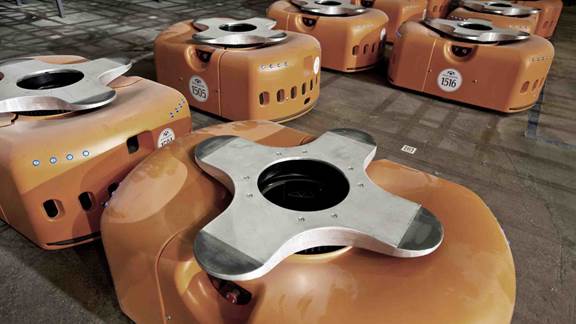Each day companies will continue to feel demand from customers for better experiences and more efficient products and service lines which will drive investments into robotics to automate tasks and connect with their user base on a deeper, more emotional level.
Most people visualize C-3PO from Star Wars when they think of robots with, essentially, the robot’s form being designed around the human form. But this is generally not the case. Robots can take on any form. Take for example the Roomba from iRobot. It is a flat disc shaped vacuum cleaner. Or any industrial robot in a factory which generally looks like an arm. Ok, then what is a robot? A robot is any machine with the ability to solve a complex task autonomously.
Robots are fascinating and promise a future where humans do not have to any dull, dangerous, or dirty jobs, but there is a problem with robotics. They are financially expensive and consume large resources to perform anything beside the simplest tasks. For example, the Willow Garage PR2 is capable of folding laundry, but this seemly simple task requires massive amount of computation needing powerful computers and batteries and, as a result, costs 280,000 dollars making the practicality to use it out of the financial reach for most people and companies.
To solve this problem, James Kuffner, a Google researcher, defined a new field of robotics called "Cloud Robotics". He defined it as a “field of robotics attempting to invoke cloud technologies such as cloud computing, cloud storage, and internet technologies centered around the benefit of converged infrastructure and shared services for robotics”. Basically, by using the cloud, such as Amazon Web Services, the robot can reduce the onboard computer systems needed for processing the task and offload this complex processing in the cloud. Now the robot can drastically reduce its onboard systems, power, and share in a common knowledge database.
Lets look at some use cases that exist today...

Cloud robotics: An automated world
Kiva Systems and Amazon
A few years ago, Amazon acquired Kiva Sysems for $775 million dollars enhancing their fulfillment centers. These cloud robotic centers can now hold more product and workers can handle 2 to 3x more orders, more accurately.
These Kiva connected robots operate by moving products from the warehouse floor to the employee who is packaging the orders. And since they are connected, they can utilize cloud services giving insight to predict the best product placement by putting popular products closer to the packager and communicate with each other to coordinate moving the products to the correct station. Once packages are filled, the robots will take them to the delivery truck to be shipped off.
Google and Boston Dynamics
Google aquired Boston Dynamics, a company which has been making animal like robotics since the early 90’s. Boston Dynamics has been leading the way with their cool Big Dog robot which exhibits exceptional skill in balance using its four legs and is very life like when it moves. They have also been investing in autonomous vehicles which have driven over 1 million miles to date.
Apple
Apple, known for their secrecy, built LIAM to disassemble the end-of-life iPhones. As well, there are rumors of Apple building an autonomous car in the market place. But there is evidence that they are working on something as they have purchased PrimeSense, a 3D scanning technology and have enhanced their Siri platform to be contextually aware with predictive analytics.
Microsoft
Microsoft acquired KUKA. KUKA is a factory system of connected robots which makes the Jeep Wrangler body. The connected factory has over 60,000 connected devices communicating to produce the entire body. And they have their own robot assistant which they are working on, Cortana. Although they appear to be moving slowly into this new cloud robotics space, they should not be ignored.
Robotics has been in the imagination on society’s minds for quite a while now. And we will soon be able to start utilizing the promise in our everyday lives. Cloud robotics will help us commercialize and bring these products to market faster, and finally rid us from doing those time wasting activities we all wish would just happen on their own.